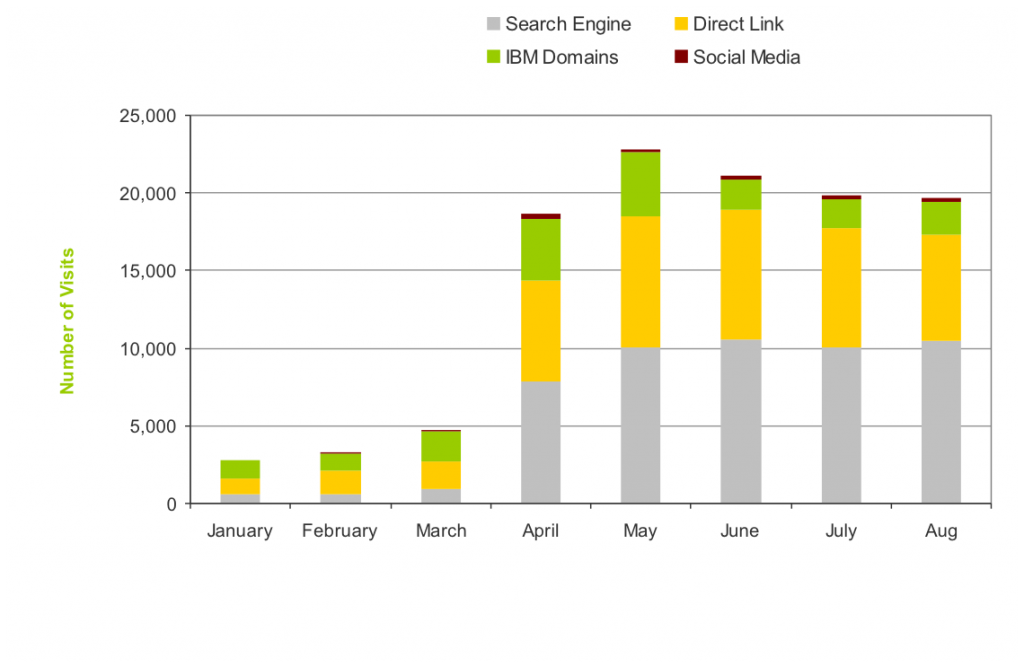Those of you who have read our book Outside-In Marketing: Using Big Data to Guide Your Content Marketing know that we take a dim view of site redesigns. Sure, there are legitimate reasons to redesign a site—most notably, to clean up and scale down. But changing the design without changing the underlying content strategy is a pointless exercise. Both your users and your friendly search bots know where everything is. You get credit for that. Moving stuff around just to get a sparkly new look only harms results.
I have been on dozens of redesign projects. The story is often the same. A new executive comes in and doesn’t like the look of the site. Within a couple of weeks, we are in meetings on how to redesign it. These meetings are run by designers who see content as so much lorem ipsum. They want flashy carousels and hamburger menus that hide much of the content from both search engines and users. The end result is a lot of white space and large graphics featuring models in provocative poses (in B2B, they are always looking like they’re happily working). Words are scarce. Calls-to-action require scrolling.
I have never seen a redesign of this nature improve results. Typically, results crater. The executive panics. We have meetings on how to improve results. I come in and show case after case of what worked in the past:
- More content above the fold
- Better content with descriptive calls-to-action
- Better site navigation tuned to common user paths
- Removing JavaScript navigation and other things that prevent the crawler from doing its job
If these things are put in place, we start to climb up the rankings and get the results we had before the redesign. Inevitably, success plateaus and they bring in a new executive to do the whole redesign dance all over again.
Recognizing SEO success
I have often wondered why executives don’t recognize success when they see it. One reason is that they don’t know what success looks like. Also, they are not judged well for keeping a good thing going. Their incentives are based on growth. Once they have maximized their content footprint for their target audiences, growth flatlines. That’s when they want to redesign.

The traffic and engagement on the above microsite hit its plateau fairly quickly. Sometime in the fall of that year, we got a new VP and she ordered a redesign. Once that was live, traffic and engagement went back to March levels. And we spent the rest of the following year trying to get back to the plateau.
The truth is, there are limits to how much traffic and engagement you can get for a set of topics. The limits are defined by the interest in those topics from the target audience. We measure that by looking at a combination of search query volume and a relevance score. The search engines give us query volume for the keywords we track. We use Watson Natural Language Understanding (nee Alchemy) to get the relevance score.
The only way to grow beyond the plateau phase is to grow your content footprint into other relevant topics for the target audience. This is where it gets tricky. When you do this, the keyword opportunities you find are either less relevant or have lower query volumes. Everywhere you look, there are diminishing returns for the effort in building experiences that meet user needs.
Here again, executives don’t know what success looks like. They expect growth at the same levels they had in the initial set of keywords, which were chosen because they had the highest query volumes and the highest relevance scores. When they don’t get those levels of growth, they impatiently redesign.
When I have been successful in educating executives on recognizing their successes, I have convinced them to focus on optimizing the experience to get a higher share of users to take the next steps in their customer journeys. That kind of growth is much more valuable, as you can attribute it to revenue. But if you have hit the traffic plateau, don’t redesign. You will only harm your results, and defeat the purpose of SEO.




